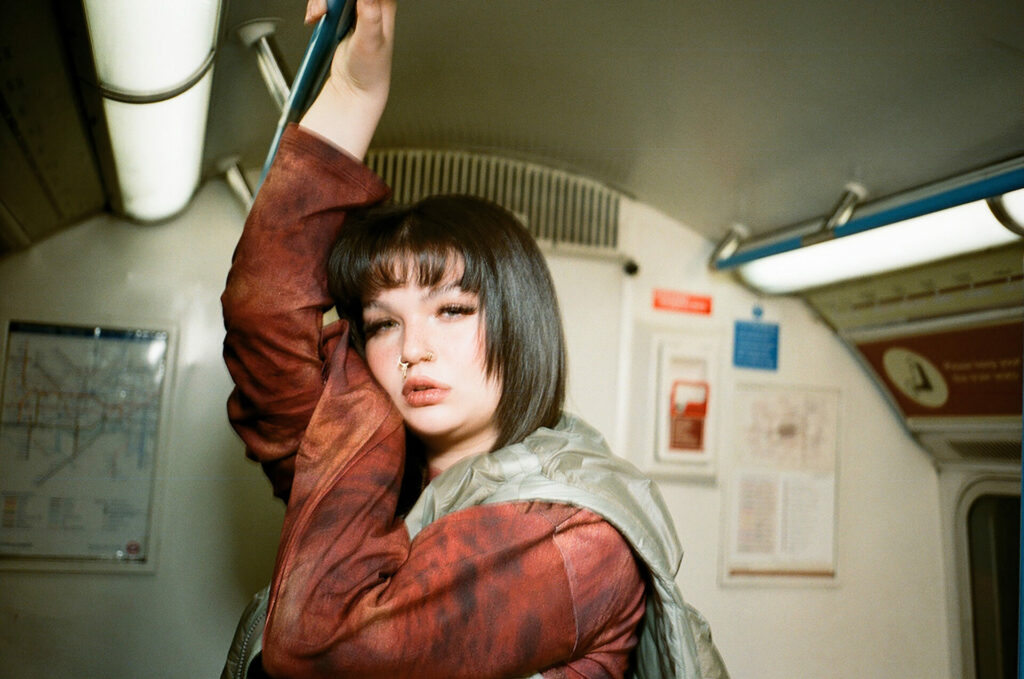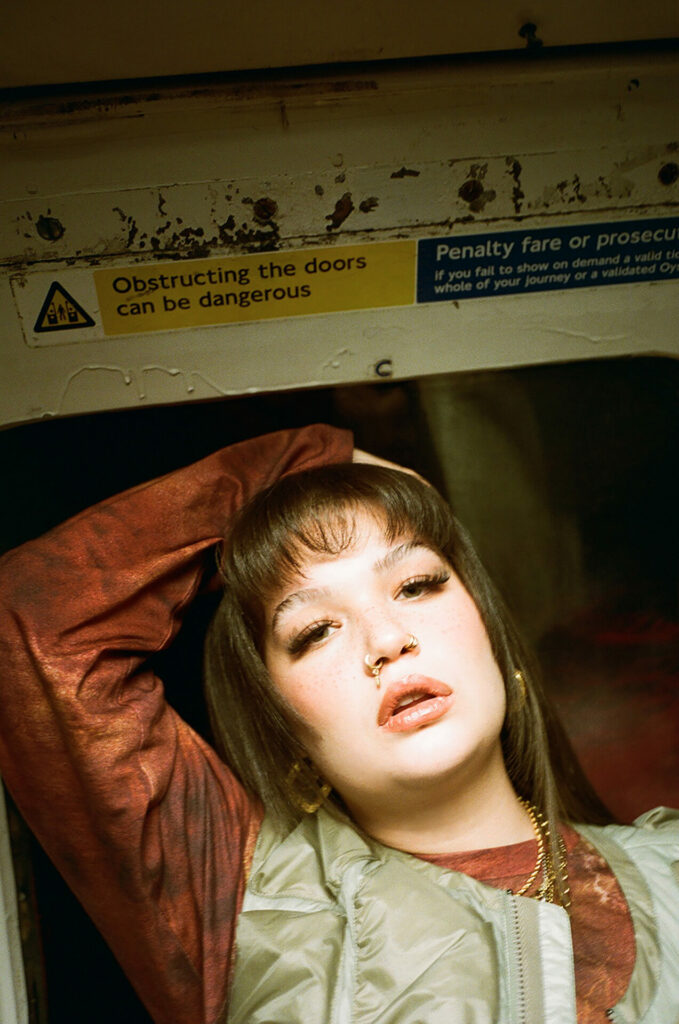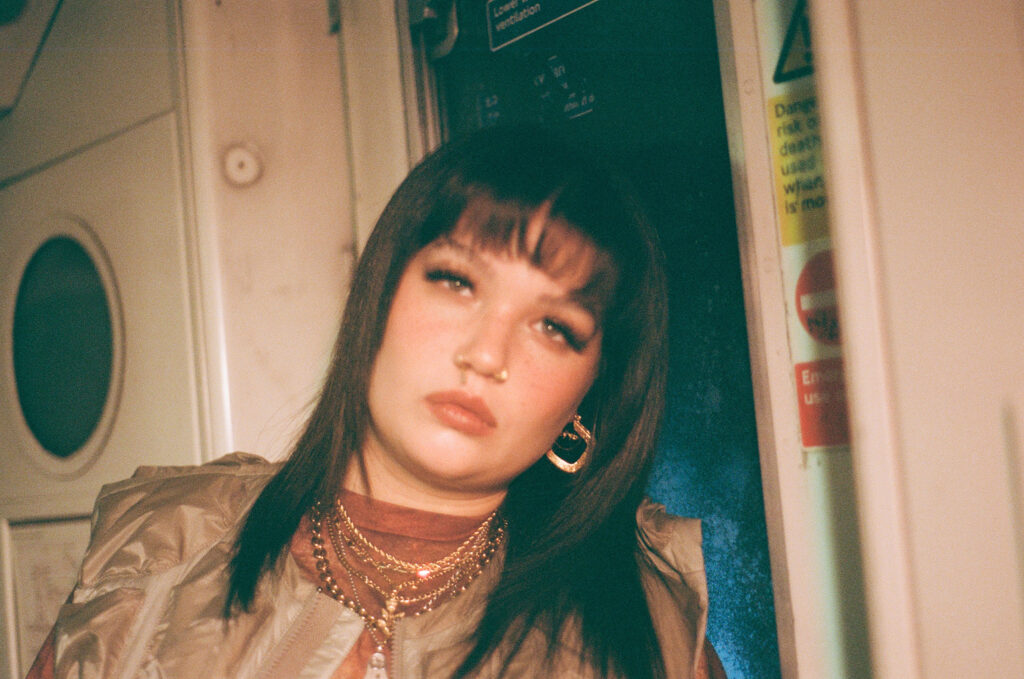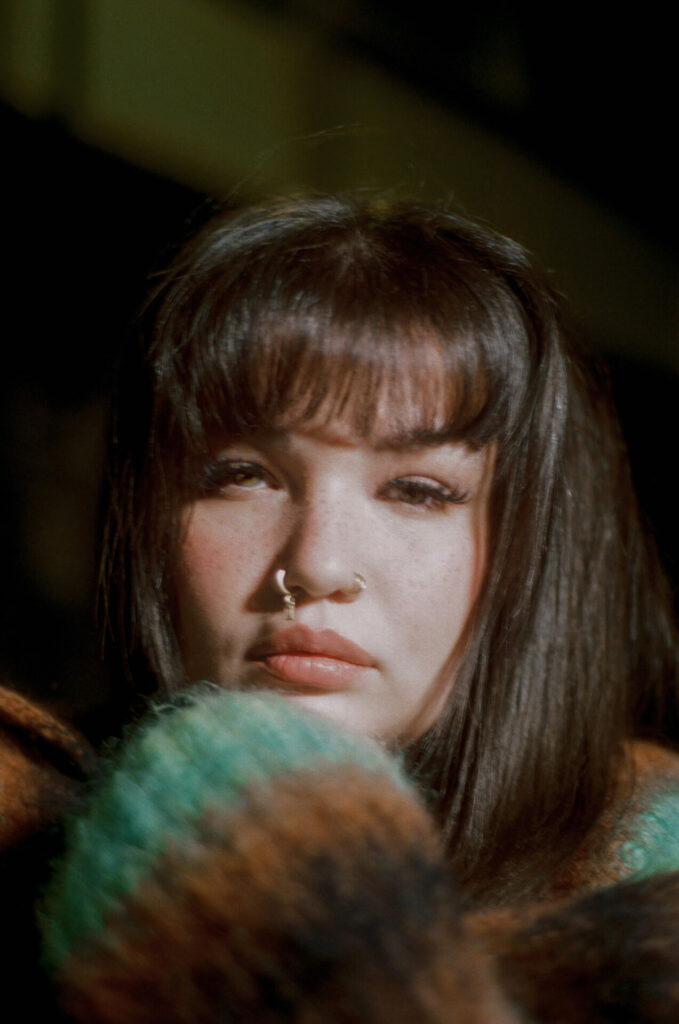Lola Young: ‘I had to train massively, I didn’t pop out the womb like Beyoncé’
Refreshingly modest about her talent, Brit School alumnus Lola Young prefers to call new release 'My Mind Wanders and Sometimes Leaves Completely' a project rather than a debut album. But there’s no denying that her soul-searching songs are hitting all the right notes
By Hannah Ewens

Lola Young didn’t always have her tremendous belting voice.
Using it, the 22-year-old introduced herself as a distinctly London artist: a mini Adele with the caustic retorts and humour of Lily Allen. Vocally, it’s like Young warbles around the note, promising to either hit or miss it, then swallows it whole. That had to be practised. “I had to train massively — I didn’t pop out the womb like Beyoncé,” she says bluntly, sat at a table in a Camden members’ club, big gold hoops in ears and vape in hand.
“Voices naturally, I think, mature and kind of find their own home as you get a bit older,” the 2022 Brit Rising Star nominee continues. Young’s voice found a second home on TikTok recently when she suddenly became a viral sensation by teasing her songs on the app — like desperate ballad ‘What Is It About Me?’ and impudent clapback ‘Don’t Hate Me’ — while performing them into a handheld mic in various public locations in London: on the Tube, with unsuspecting British passengers pretending to not hear her; riding a decorated horse around a carousel; strolling along the canal in Camden. The commenters frequently express being slapped around the face with that voice.
Young was born in Croydon, grew up in southeast London and still lives there near family. Her dad was a professional bass player and her mum constantly played music around the house. From the age of six, Lola’s mum forced Young into piano, guitar and singing lessons that evidently paid off. Her eclectic music taste comes through in her R&B-inflected pop: she naturally gravitated towards older artists like Prince, Joni Mitchell and Leonard Cohen but absorbed the popular music of her age group and millennials, such as Eminem, Avril Lavigne, Frank Ocean and SZA — the latter messaged her not long ago telling her she was a fan. “I could never say what she said to me, in case she read this,” Young says, suddenly bashful.
A significant part of her press so far has focused on her journey through the infamous BRIT School — an institution known for artists who could all feasibly be reference points to describe Young’s sound: Adele, Amy Winehouse, Jessie J, Kate Nash, Leona Lewis, King Krule. She started in Year 10, knowing she didn’t want a Plan B. Music was her future.

“I was very much sceptical because BRIT holds up to be a very prestigious school. It’s got a legacy, but I think for me, it was more in the sense of like, I didn’t know what was going to come out of it. But I was very excited. There’s that natural cliqueness of a school there, but there’s also the vibrancy,” she says. “What it did for me, it opened my eyes in terms of the social-political realm of the world, because there were guys walking around in dresses and doing their makeup, there was drag. It was massively eye-opening at the time. Now I can look back and go, ‘Oh my gosh, like, that’s such an incredible thing that school is able to host people to just be themselves.’ Not many schools, I believe, around the country are able to give you that freedom of expression.”
Not to brag, she says, but nearer the end, she already knew a lot of what she was being taught. She was signed to Island Records at 18 and prior to that had been gigging for a few years. “You don’t need to go to the BRIT School to be successful, and even Stuart Ward, who is the head of BRIT, this amazing guy, he always says, ‘This is not a grounds to make you successful. This is a place that’s going to help you and teach you things that will help you master your craft.’” Young is not a fan of normal schools: “The education system, I think, is very tapped and very stupid. I definitely was more of a visual learner, but also had no idea what visual learning was. And I also didn’t really understand what type of learning I was good at. In my personal opinion, I don’t think everyone needs to go to school. I think obviously, education is really important, but the education system is flawed.”
Three weeks of personal suffering — or “having a mad one” — in LA and Young made her most significant body of work yet. Don’t call it an album, though. “It is an album but it’s not. The word ‘album’ has changed. The pressure with the industry and labels and stuff of calling it a debut album is going to be a lot for me in my career,” she says quickly. “So I don’t necessarily want to call this my debut album, even though it kind of is. I want to ensure that the album I do create is perfect. I’m not someone who wants to release one album either. I want to do tens of thousands of albums.” She considers what she’s said for a few seconds. “So, this is a project.”

The project is called My Mind Wanders and Sometimes Leaves Completely. When Young initially wrote songs, it was a process of letting out emotions she otherwise didn’t feel able to in daily life. Now she understands that making songs is a job, so she writes in a more structured, intentional way, “not that that’s a negative thing”. The result is 10 songs that are well-crafted, dreamy interrogations of being in your early 20s, with pop hooks and powerful vocal flourishes. They’re all about living out that contradictory, young-adult reality of oozing confidence but being painfully insecure at the same time.
The first and final track bookend the LA-inspired story, Young explains. Expansive, spoken-word-style opener ‘Stream of Consciousness’ is “basically me going, like, ‘Fuck, I’m in such a way. I’m in my head about shit,’ she says, and sings the lyrics at the table. “I say, ‘I dream in colour / I hate the summer / I act tougher than I really am / I’m a fuckup / I told my mother / I don’t love her when she’s all that I have.’ Then the saddest bit that makes me really upset thinking about is ‘the child in me has been and gone, isn’t that sad?’. For me that speaks about the struggle of growing up and of hating yourself and the struggle of hating other people in response to hating yourself and a bunch of other things that come with those feelings.” The final, breezy, peaceful pop song ‘Chill Out’ is her telling herself to do just that. “The sky is not falling,” she says, “And that is completely the opposing message to the first song, so basically it goes full circle where at the end, I’m going to myself, ‘You’re not going to die, babe’.”
Between those you’ve got songs like infectious, soulful sing-a-long ‘Revolve Around You’ — “it’s a beautiful, heartfelt record about the fact that I’m pissed off that someone has made my life revolve around them” — and a slow-motion ballad about being the Other Girl, ‘Annabel’s House’. Piano and brass-accompanied ‘What Is It About Me’ is a standout track in the emotional vein of Sam Smith’s ‘Stay with Me’ and Adele’s ‘Someone Like You’. “What is it about me / That makes you question your life?” Young asks repeatedly, and finally adds, “And lets you let me question mine?” Then on ‘Don’t Hate Me’, she regains her composure and sasses her way across a darker, stripped-back beat. “I think I love you but it’s hard to be around you,” she half-sneers and laughs as she tells the object of her affections that he’s the boring one of the pair of them.

‘Semantic Satiation’ is her favourite song on the record. “It’s basically when you say a word over and over again till it loses its meaning,” she explains. “I get it with ‘slug’. I hate slugs, they make me feel violently ill. I’ve got a bad slug phobia. And so if I say slug over and over again, it loses meaning, but I think for that song I wanted to do it for ‘love’. You have to listen to the song to understand what I’m saying. It’s not that on the nose but it’s quite pretentious.” She revises that statement with a confident toss of her head. “But at the end of the day, I don’t really give a fuck. And it came out beautifully, so I’m really, really happy about it.”
We are meeting in Camden ahead of her show at a local pub venue. For all her bravado and blunt charm, Young feels a little nervous. She asks a waiter what the food is he’s carrying to another customer (“No, just felt like being nice, to be honest,” she says when I ask if she’s hungry) and begins to fidget in her seat. She’s a bit nauseous, she realises.
“I haven’t performed in a long time,” she offers by way of explanation, then seeing my nicotine spray, she asks, “…does vaping make you feel sick?” No, I say. “I think I’ve drunk too much water. Sorry.” She apologises and goes to get some fresh air on the balcony, where her manager and team are waiting for her.
Later, at the show, she strides through the audience to get to the stage like a ready-made diva. “If there’s one thing you know about a Lola Young show, it’s that I chat shit,” she tells her fans. “It’s like farting when you laugh, you can’t control it.” Through soaring ballads and up-tempo bops, Young holds everyone captive with that voice. When it’s time to introduce ‘Semantic Satiation’, she starts to cry. “When I wrote it, I was having a breakdown,” she admits between tears and suddenly gives a flip of her hair, and says, with a completely straight face, “I’m a boss, aren’t I.”
Taken from issue 11 of Rolling Stone UK, out May 11. Buy your copy here.
